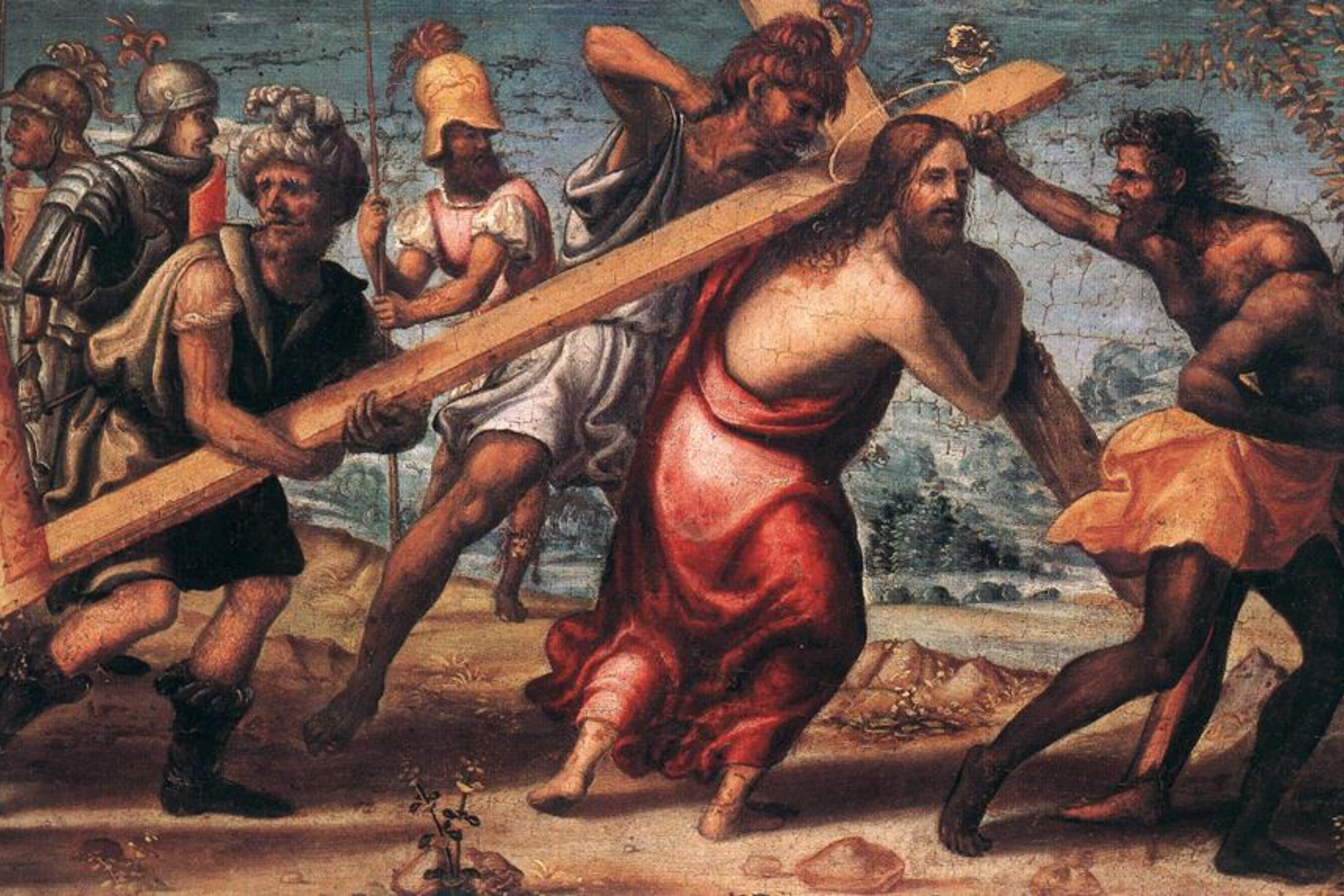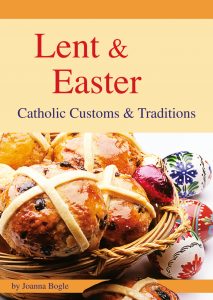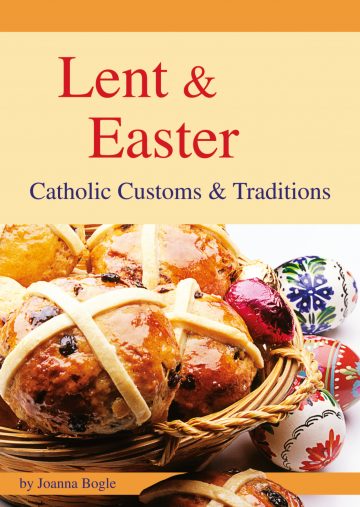“Let us fix our eyes on Christ’s blood and understand how precious it is to his Father, for, poured out for our salvation, it has brought to the whole world the grace of repentance.” (St Clement of Rome)
The old Anglo-Saxon name for Good Friday was “Lang Fredag” or “Long Friday”, “long” in the sense of being great and significant. The day is “good” because it is the day that our salvation was won for us by Christ on the Cross, but of course it is a day of sorrow, solemnity, and mourning. The name may also come from the idea of its being “God’s Friday”.
It is because of Good Friday that every Friday is important for Christians, and observed as a day of penance. As Catholics we are meant to abstain from meat, or to observe some small act of penance, every Friday, throughout the year.
The Liturgy
The central focus of Good Friday is the liturgy solemnly commemorating the passion and death of Christ, usually held in the afternoon at 3pm – the time at which Christ’s passion is understood to have taken place. The liturgy begins with the priest and deacon completely prostrating themselves, in silence, in the sanctuary, while the entire congregation also falls to its knees. It is a powerful image of complete and humble submission to God, who took upon himself the weight of our sins and died for us in agony. A cross is brought forward and solemnly unveiled for veneration, which is normally done by kissing it. The Veneration of the Cross is a powerful and moving reminder of what the Cross means to us. The Passion of Christ is then read from the scriptures, and finally Holy Communion is distributed. Mass is not celebrated on Good Friday. Since the Mass of the Last Supper, a great silence has descended on Church around the world.
The Good Friday liturgy has a note of solemnity that is not found on any other day of the year. After Holy Communion and the final blessing, everyone departs in silence. There is no final hymn, and the organ does not play as we leave the church. During the liturgy there have been no bells, only the bleak sound of a wooden clapper. There are no flowers on the altar and the Tabernacle is empty as the Blessed Sacrament has been reserved in a side altar. Everything about Good Friday combines to emphasise that this is the day on which Jesus Christ died on Calvary after hours of suffering.
Traditions
There are many old traditions associated with Good Friday. Because of the action of the soldiers in nailing Christ to the Cross, blacksmiths would not shoe horses on that day, as the work involves hammering nails into the horses’ hooves.
The Cross is traditionally said to have been made of wood from the ash tree, which is why that tree always quivers slightly.
Good Friday is said to be a good day for planting seeds – because Christ’s blood fell on to the soil and blessed it on that day. Why not buy some flower-seeds and plant them on the afternoon of Good Friday?
Hot Cross buns
The traditional food for Good Friday is the Hot Cross Bun. These are spicy fruit buns, marked with a cross on the top, and eaten hot from the oven. The origin of the hot cross bun is simple: it is eaten on this day of fasting as a replacement for other food. Good Friday is a day when normal meals are not eaten. The Church calls us to fast and to abstain from meat. We can have one main meal, which will be of fish or vegetables.
In some places, hot cross buns are distributed after church, and there are ancient charities which arranged funds for this purpose.
Hot cross buns! Hot cross buns!
One a-penny, two a-penny
Hot cross buns!
Good Friday has for centuries been a day on which normal work is suspended. In recent years, shops have opened and shopping has become a major activity of the day – further evidence of a nationwide retreat from Christian culture.
Good Friday food
Because Good Friday is a fasting day, there should be only one main meal. It is worth planning this well in advance, and establishing a family tradition. Fish pie? Vegetable pie? If you are making anything with pastry, make a pastry cross to place on top before baking.
Witness Walks
A new tradition, which began in the mid-20th century, is that of a “Good Friday Walk of Witness” in which Christians from all the different denominations in a town will join together for a silent procession culminating in a short open-air service of prayers and hymns in a park or shopping centre. Sometimes this includes the erection of a large Cross which will then remain in place all weekend and be decorated with flowers on Easter Sunday morning. A walk of this type usually takes place in the morning.
Easter garden
Good Friday is by tradition a quiet day, not a day for television, shopping, or treats. It is worth planning Good Friday activities well in advance. One activity for the day is the making of an “Easter garden” on a tray – after a walk to gather moss, earth, small pebbles, and some flowers such as daisies and celandines. In one corner there should be a hill, on top of which are three crosses, made of twigs. In another corner white stones make a tomb, with a stone at the door which can be rolled away on Easter morning, when a tiny white piece of cloth can be found inside. You will need some purple cotton or embroidery-silk with which to bind together the small sticks for the three crosses – this could be replaced with golden thread on Easter morning. An Easter garden can also include a little lake, using a mirror or a small dish of water. There can be a pebbled pathway leading up the hill.
In addition to the main afternoon liturgy of Good Friday, most parishes also arrange the Stations of the Cross on Good Friday. Sometimes there is also a special children’s liturgy. The Stations of the Cross can also be prayed at home: some families do this by having fourteen lit candles, with one being extinguished as each Station is begun. This slow darkening of the room brings a solemn sense of Good Friday. For the Stations of the Cross you will need fourteen plain white candles. To make them stand upright, slice a potato in half for each candle, scoop out a deep hole for the candle and stick it in. You can make the stands look more attractive by covering the potato-halves in silver foil.
This blog is extracted from our ebook Lent and Easter. This booklet describes the rich heritage of customs and traditions long practiced by Catholics down the ages, up to today and how the liturgy in turn enriches their meaning.
Download Lent and Easter from your preferred ebook platform.


